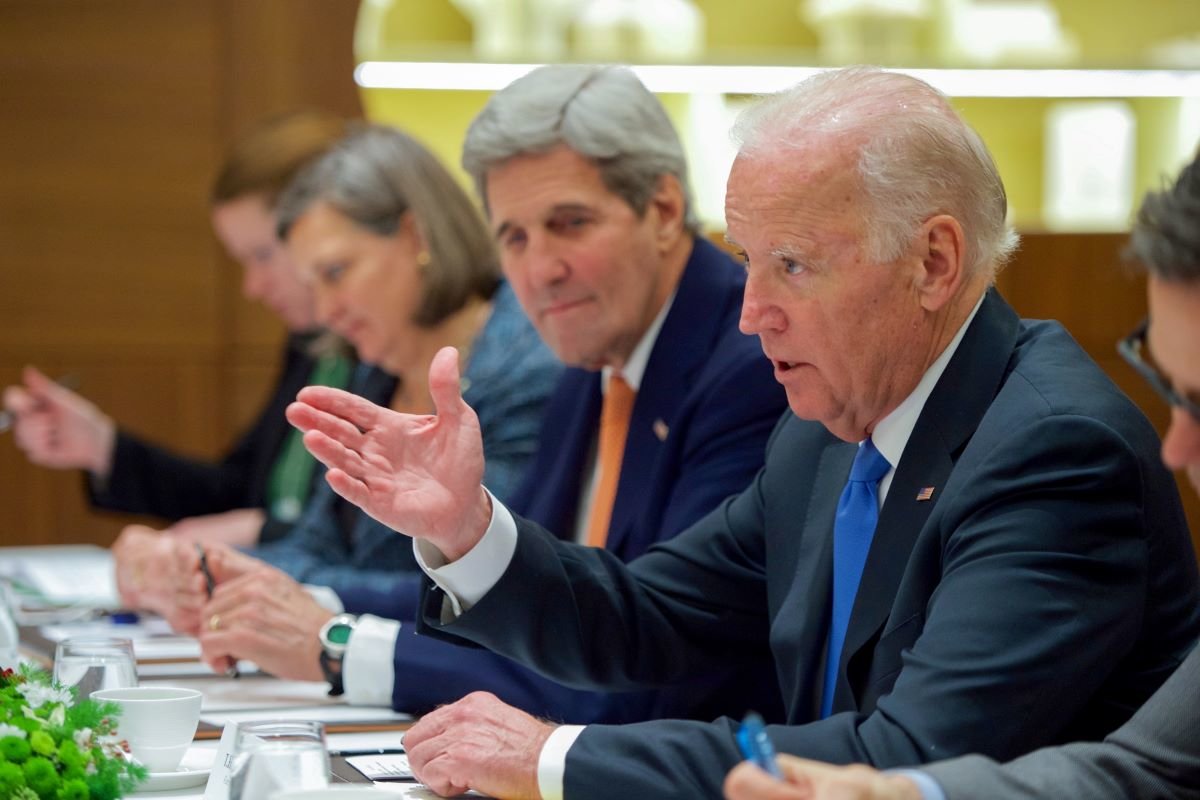This article is part of our series on coal phase out and the G7 in 2021. You can find a full list of articles, along with the backstory of our analysis of G7 coal trends since 2015, here.
On his first day in office, President Biden signed an Executive Order to rejoin the Paris Agreement. By the end of his first week, the new Administration had issued a comprehensive plan on Tackling the Climate Crisis at Home and Abroad, committing to cooperation with the G7 and other partners.
This was a full 180-degree turn from the actions of the Trump Presidency. It marked the start of an effort to rectify damage done to America’s international standing and reboot its domestic policies on climate and the USA’s coal transition. It was also a necessary response to the realities of the coal sector.
Despite proclaiming that ‘Trump digs coal’ and promising to put miners back to work, the reality of the previous four years was the continued structural decline of coal power generation in the US. As Figure 6 shows below, coal plant retirements accelerated in comparison to both of President Obama’s terms in office. In parallel, electricity generation from coal fell from 30% in 2016 to 19% in 2020. Meanwhile, coal miners were left without healthcare and pensions as mining companies misspent funds and entered bankruptcy proceedings. Communities continued to suffer the health impacts of air pollution and environmental injustice. All while environmental protections were removed and the Clean Power Plan abandoned.
For all the noise and political rhetoric, coal is still on its way down and out. There are zero new coal power plants under development in the USA. By our calculations, 53% of US coal capacity has either closed already since 2010 or is scheduled to close by 2030. This includes at least 63GW of capacity that already has a closure date.
A further 170GW of currently operating capacity is yet to confirm when it will retire. A continuation of recent closure rates and market trends would make a 2030 coal exit an achievable goal. Recent analysis from RMI finds that 79% of the US coal fleet is currently uneconomic compared to new renewables and storage, meaning the entire coal fleet could be replaced at a net savings of $9 billion. Similarly, multiple modelling exercises find that unabated coal power generation would indeed be offline around the end of this decade, aligned with the Biden Administration’s goal of a carbon pollution-free electricity sector no later than 2035.
Figure 6. Comparing US coal capacity and retirements under Obama and Trump administrations. Data source: Global Energy Monitor, Jan 2021.
In recognition of this accelerating coal transition, the Biden Administration has immediately prioritised the provision of finance for workers and coal communities to enable a Just Transition in USA. In parallel, key coal-state Senator and Chairman of the Senate Committee on Energy and Natural Resources Joe Manchin has co-sponsored two bills to rehabilitate lands damaged by abandoned mines and help diversify coal community economies. Senator Manchin also serves on the IEA’s Global Commission on People-Centred Clean Energy Transitions.
Communicating and cooperating internationally
Without this, it will be unable to show how it will deliver on its renewed commitment to the Paris Agreement and its NDC target of 50-52% emissions reductions by 2030. Nor will it have a credible foundation for its international diplomacy. This is recognised by Special Envoy John Kerry, who highlighted at the Ministerial on Climate Action that “Our words must be backed up by near-term action, including the transition away from unabated coal.”
The new USA government has openly set out that it will encourage other countries to accelerate their own coal-to-clean transitions. Speaking ahead of President Biden’s Leaders’ summit, Secretary of State Antony Blinken stated that the US will use its diplomatic network to challenge countries that are still relying on coal or pursuing new coal investments. The US also announced restrictions on overseas fossil fuel financing, including coal finance through the US’s export credit agencies.
Positively for the USA, the world has moved on over the past five years and action on coal transition is now a recognised priority for diplomatic outreach. In 2017 Canada and the UK created the Powering Past Coal Alliance (PPCA), thereby providing a collective counterweight to the pro-coal efforts of the Trump Administration. And in early 2021 the EU explicitly declared that it would pursue global coal phase out through its foreign policy. This transatlantic team approach to diplomatic engagement is already delivering results: South Korea used the US-hosted Leaders’ summit to announce its own restrictions on coal finance, following concerted diplomatic engagement from progressive governments. The US can cement a critical mass of diplomatic influence by further developing its practical cooperation with the EU and PPCA.
Indeed, on his own visit to Seoul, Special Envoy Kerry was explicit about the need for action on coal both at home and abroad, most notably from China, stating “it is imperative to reduce coal, globally, everywhere. In the United States, we are addressing our own. We have some remaining coal mines and coal plants. We have phased many out.” And noting “if we do not move in this decade, we cannot achieve the 1.5, let alone 2050 net zero. So, it is imperative to address the question of reducing coal dependency everywhere.”
With the UK Presidency looking for COP26 to “consign coal to history”, all eyes will be on how the USA will support the global coal transition. The G7 is the ideal venue for the Biden Administration to communicate its own coal-to-clean pathway and cooperate with partners.
Jump to another article in this series:
- Charting the course away from coal: the G7’s leadership opportunity
- Strong currents: G7 coal transition data trends
- Surfing the waves: G7 progress towards coal phaseout
- Picking up the pace: Germany’s coal exit is getting closer to 2030
- Anchors aweigh: USA rejoins the coal transition mainstream
- Time and tide wait for no one: Japan’s coal progress



